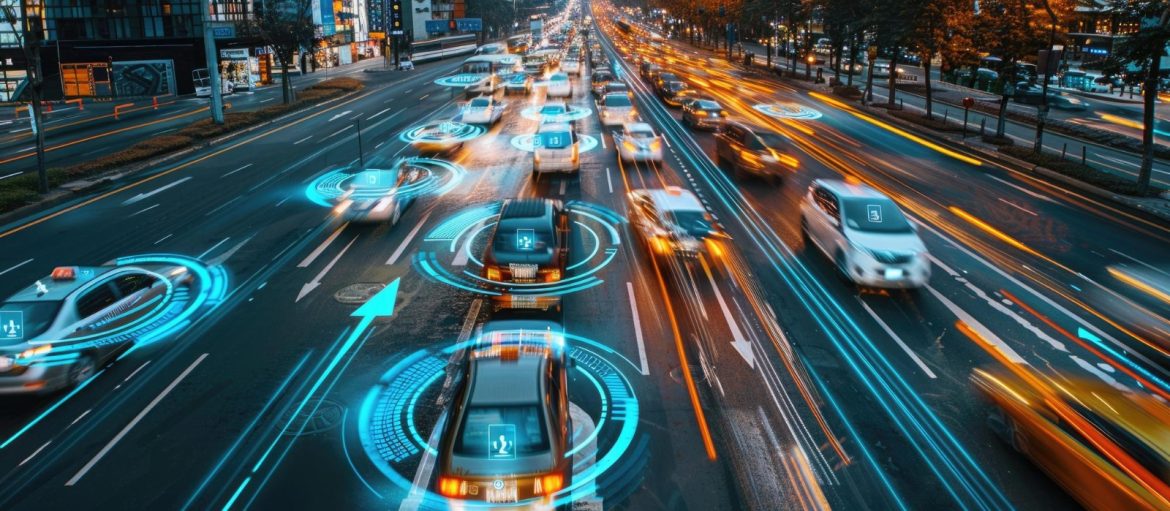The recent milestone of Amazon’s robotaxis, which have received permission to operate on public roads, marks a turning point in Spanish mobility.
This advance, framed within the Spanish Government’s Safe, Sustainable, and Connected Mobility Strategy 2030, demonstrates how artificial intelligence and advanced sensor technology are leaving the laboratories to integrate into our daily lives.
These vehicles, capable of navigating, avoiding obstacles, and optimizing routes autonomously, promise to be the spearhead of a revolution that aspires to redefine urban space.
The promise of this transformation is twofold: sustainability and efficiency. According to sector experts, such as those cited by the Center for Studies and Experimentation of Public Works (CEDEX), the transition towards connected and autonomous mobility (V2X) could significantly reduce congestion and polluting emissions.
The ultimate goal is a transport ecosystem where shared, driverless vehicles optimize traffic systemically, reducing the need for private vehicles and improving air quality in our cities—a priority challenge on the European agenda.
However, the technological euphoria is not without critical voices urging deep reflection. Spanish researchers, such as the Professor of Urban Planning at the Polytechnic University of Madrid, Esther Higueras, warn of the risk of a “dehumanizing transition.” They emphasize that technology must be at the service of people and not the other way around, and they alert us to potential social divides. What will happen to the elderly or those with fewer technological resources? How will universal accessibility be guaranteed in a system based on applications and algorithms?
The ethical and legal debate is another open front. The EU’s AI Directive and the forthcoming national legislation seek to establish a framework for civil liability in case of accidents with autonomous vehicles.
The question of “who is liable” when there is no human driver at the wheel remains a legal puzzle not yet fully resolved. Cybersecurity and the protection of the vast amount of data these vehicles collect are also a concern for the Spanish Data Protection Agency (AEPD), which is the independent public body responsible for overseeing compliance with personal data protection legislation in Spain and guaranteeing the fundamental right to data protection for citizens.
I want to specify that autonomous vehicles collect, process, and transmit vast amounts of personal data in real time. This includes passenger data (identity, routines, frequent destinations, payment methods), biometric data (in some cases, for user identification), and video and audio from inside and outside the vehicle, which can capture images of pedestrians, other drivers, and license plates.
All this information is extremely sensitive, which is why the AEPD would be the authority responsible for investigating whether the processing of this data by companies like Amazon is carried out lawfully, transparently, and securely, as well as ensuring that citizens’ rights are respected (for example, the right to know what data is collected or to object to being recorded on public roads).
It would also be responsible for imposing sanctions if a leak or misuse of this information occurs. Its action is crucial because, alongside technological advances, data privacy and security stand as one of the main regulatory pillars and social concerns.
And well, beyond autonomous cars, the future of transport appears multimodal and interconnected. The Sustainable Urban Mobility Plans (PMUS) of cities like Barcelona or Valencia no longer just talk about robotaxis, but also about their integration with an electrified public transport network, high-capacity bike lanes, and micromobility solutions (electric scooters and bikes). The key, experts point out, lies not in a single miracle technology, but in creating a resilient ecosystem where all of them cooperate.
In conclusion, the year 2025 presents itself as a crucial moment, a real-scale laboratory where the foundations of future mobility are being decided.
The arrival of robotaxis is a powerful symbol of this change, but the path towards truly intelligent and fair mobility requires overcoming significant technical, legal, and, above all, social challenges. Success will not be measured only by the sophistication of the technology, but by its ability to create more livable, inclusive, and sustainable cities for all its citizens.
Have any thoughts?
Share your reaction or leave a quick response — we’d love to hear what you think!





